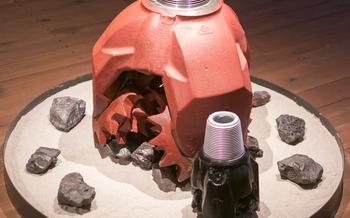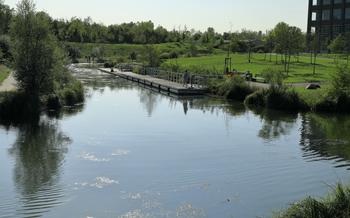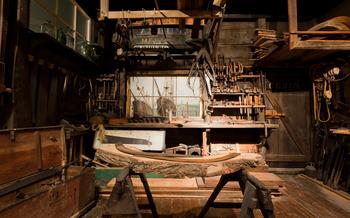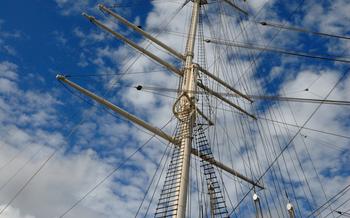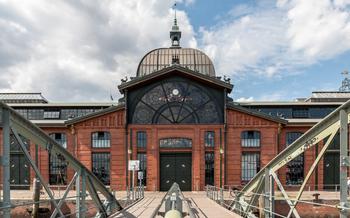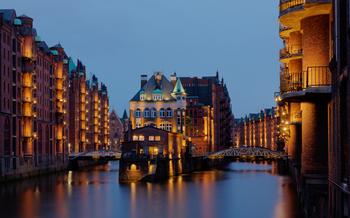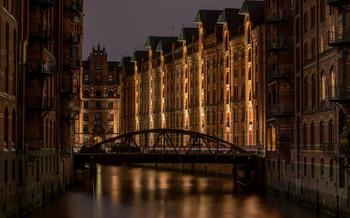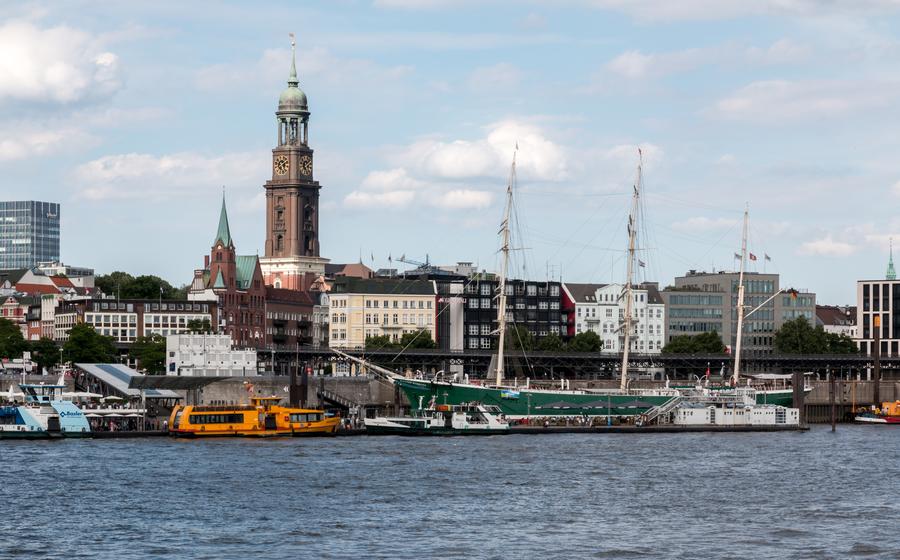
Rickmer Rickmers
- A Maritime Gem in Hamburg: Unveiling the Enchanting Rickmer Rickmers
- Stepping Aboard the Rickmer Rickmers: A Journey Through Time
- A Ship's Story: The Rich History of the Rickmer Rickmers
- From Cargo Carrier to Museum Ship: The Rickmer Rickmers' Transformation
- Immersive Exhibits and Displays: Bringing History to Life
- A Walk Through the Past: Exploring the Ship's Decks
- A Glimpse into Seafaring Life: The Sailors' Quarters
- Navigating the High Seas: The Ship's Cargo and Trade Routes
- Confronting the Perils of War: The Rickmer Rickmers in World War I
- A Symbol of Resilience: The Ship's Post-War Journey
- A Museum Dedicated to Maritime Heritage: The Rickmer Rickmers Today
- Planning Your Visit to the Rickmer Rickmers: Essential Information
- Capturing the Essence of the Ship: Photography Tips
- Souvenirs and Mementos: Preserving Your Rickmer Rickmers Experience
- Insider Tip: Exploring the Neighborhood
A Maritime Gem in Hamburg: Unveiling the Enchanting Rickmer Rickmers
Nestled along the vibrant waterfront of Hamburg, the Rickmer Rickmers stands as a proud testament to the city's rich maritime heritage. Once a majestic sailing ship that traversed the world's oceans, this beautifully preserved vessel now serves as a captivating museum ship, inviting visitors to embark on a journey through time and experience the grandeur of the sailing era. Its historical significance, captivating presence, and easy accessibility make the Rickmer Rickmers a must-visit attraction for anyone seeking a glimpse into the world of seafaring and maritime history.
Stepping Aboard the Rickmer Rickmers: A Journey Through Time
As you step aboard the Rickmer Rickmers, you are greeted by a magnificent sight. The ship's towering masts, intricate rigging, and weathered hull evoke a sense of awe and wonder. Explore the ship's deck, where you can marvel at the intricate details of its construction. The ship's wooden deck is worn and weathered, bearing the marks of its long and arduous voyages. Peer over the ship's railing and gaze upon the shimmering waters of the Elbe River, imagining the countless journeys the Rickmer Rickmers has undertaken.
Climb the ship's rigging, if you dare, and experience the thrill of being suspended high above the deck. From this vantage point, you can appreciate the ship's impressive size and the skill of the sailors who once navigated her through treacherous seas. Descend into the ship's hold, where you can glimpse the dark and cramped spaces where the ship's cargo was once stored. Imagine the back-breaking work of the sailors as they loaded and unloaded the ship's cargo, often in harsh and dangerous conditions.
A Ship's Story: The Rich History of the Rickmer Rickmers
The Rickmer Rickmers' journey began in Bremerhaven, Germany, where the renowned Rickmers shipyard meticulously constructed the ship. Launched in 1896, it embarked on its maiden voyage across the vast oceans, carrying precious cargo to distant shores. Its early years were marked by successful trading expeditions, establishing its reputation as a reliable and sturdy vessel.
However, the outbreak of World War I in 1914 dramatically altered the ship's fate. Drafted into naval service, it found itself thrust into the chaos and uncertainty of war. Armed with defensive weaponry, the Rickmer Rickmers played a crucial role in safeguarding German merchant ships from enemy attacks. It bravely weathered numerous perilous encounters, narrowly escaping enemy fire and submarines.
The war left an indelible mark on the ship and its crew. Despite emerging from the conflict relatively unscathed, the Rickmer Rickmers bore the scars of battle. Its crew had witnessed the horrors of war firsthand, their resilience and camaraderie forged in the face of adversity.
From Cargo Carrier to Museum Ship: The Rickmer Rickmers' Transformation
After decades of traversing the world's oceans, the Rickmer Rickmers faced an uncertain future in the 1980s. With the decline of the sailing ship era, the vessel found itself without a purpose. However, a glimmer of hope emerged when the city of Hamburg, recognizing the ship's historical significance, stepped in to save this maritime gem.
In 1983, the city acquired the Rickmer Rickmers, marking a pivotal moment in the ship's journey. With a vision to preserve and showcase this extraordinary vessel, Hamburg embarked on an ambitious restoration project. Skilled craftsmen and maritime experts meticulously worked to restore the ship to its former glory, paying careful attention to every detail.
The transformation from cargo carrier to museum ship was a labor of love and dedication. The ship's hull was repaired, its rigging was replaced, and its decks were refurbished. The interior was also carefully restored, with authentic materials and furnishings used to recreate the ship's original ambiance.
Finally, in 1987, the Rickmer Rickmers reopened its doors to the public as a maritime museum. This remarkable vessel, once a workhorse of the seas, had found a new lease on life, ready to share its stories with generations to come.
Immersive Exhibits and Displays: Bringing History to Life
The Rickmer Rickmers Museum offers an array of captivating exhibits and displays that vividly recreate the ship's history and the lives of its crew. Through interactive displays, visitors can discover the ship's construction, its various voyages, and its role in significant historical events. Authentic artifacts, such as nautical instruments, personal belongings, and cargo samples, provide a tangible connection to the ship's past. Multimedia presentations and guided tours further enhance the experience, offering insights into the ship's operation, its crew's daily lives, and the challenges they faced during their seafaring journeys. These immersive exhibits bring history to life, allowing visitors to step back in time and experience the rich maritime heritage of the Rickmer Rickmers.
A Walk Through the Past: Exploring the Ship's Decks
As you ascend the ship's decks, you'll embark on a journey through maritime history. Each deck offers a unique perspective and glimpse into the ship's past. The lower deck houses the ship's engine room, where the mighty steam engines once powered the vessel across vast oceans. Admire the intricate machinery and marvel at the engineering prowess of the era.
Ascending to the main deck, you'll find yourself surrounded by towering masts and an array of rigging. This is where the ship's crew worked tirelessly to navigate and control the vessel. Explore the ship's wheel, learn about the intricate knotwork, and imagine the sailors scaling the rigging during stormy seas.
The upper deck provides a panoramic view of the ship and the surrounding harbor. From here, you can admire the ship's sleek lines, elegant curves, and the intricate details that adorn its exterior. Stroll along the deck, breathe in the fresh sea air, and soak in the ambiance of this maritime gem.
Finally, make your way to the bridge, the ship's command center. Here, you'll find the ship's wheel, navigation instruments, and charts. Imagine the captain standing at the helm, guiding the ship through treacherous waters and charting a course towards distant lands.
A Glimpse into Seafaring Life: The Sailors' Quarters
The life of a sailor aboard the Rickmer Rickmers was a challenging one, marked by long hours, cramped living conditions, and the constant dangers of the open sea. The ship's crew, typically consisting of around 20 to 30 men, lived in close quarters, with hammocks slung in the ship's hold serving as their beds. These hammocks, which could be quickly rolled up and stowed away during the day, were often the only private space that sailors had.
Daily life on board the Rickmer Rickmers was dictated by the ship's routine. Sailors would rise early, typically around 5 or 6 in the morning, and begin their duties. These duties included maintaining the ship, handling cargo, and navigating the vessel. Meals were simple and often consisted of salted meat, hardtack biscuits, and watery soup. Sailors would often supplement their diet with fresh fruits and vegetables when the ship docked in port.
The challenges and hardships faced by sailors were numerous. They endured long periods at sea, often months or even years, without seeing land. They faced the dangers of storms, shipwrecks, and pirates. They also had to contend with diseases such as scurvy and cholera, which were common on long sea voyages. Despite these challenges, sailors developed a strong sense of camaraderie and resilience, forged through their shared experiences and the bonds they formed while working together in a confined space.
Navigating the High Seas: The Ship's Cargo and Trade Routes
The Rickmer Rickmers, during its active years, traversed the world's oceans, carrying a diverse range of cargo. The ship's holds were filled with various commodities, reflecting the global trade networks of the era. From the bustling ports of Europe, the Rickmer Rickmers embarked on voyages to distant lands, transporting manufactured goods, textiles, machinery, and other products. On its return journeys, the ship brought back exotic spices, tea, coffee, and raw materials from far-flung destinations.
The ship's trade routes spanned the globe, connecting Europe with Asia, Africa, and South America. It sailed around the Cape of Good Hope, braved the treacherous waters of the South Pacific, and crossed the vast Atlantic Ocean. Each voyage presented its own set of challenges and rewards, as the crew navigated diverse weather conditions, encountered different cultures, and experienced the wonders of distant shores.
The economic significance of the Rickmer Rickmers' voyages was substantial. The ship played a crucial role in facilitating global trade and commerce. Its cargo contributed to the growth of industries, the exchange of goods and ideas, and the interconnectedness of nations. The ship's success reflected the ingenuity and maritime prowess of the German merchant fleet, which played a significant role in shaping the global economy of the late 19th and early 20th centuries.
Confronting the Perils of War: The Rickmer Rickmers in World War I
With the outbreak of World War I in 1914, the Rickmer Rickmers found itself thrust into the conflict. The ship's neutral status initially spared it from direct involvement, but as the war intensified, it became increasingly difficult to maintain neutrality. In 1916, the Rickmer Rickmers was requisitioned by the German Navy and converted into an auxiliary cruiser. Armed with guns and camouflage, the ship embarked on a new mission: to patrol the seas and disrupt enemy shipping.
The Rickmer Rickmers' wartime service was not without its perils. In 1917, the ship narrowly escaped destruction when it encountered a British submarine. The submarine fired a torpedo, but the Rickmer Rickmers' quick maneuvers allowed it to evade the deadly projectile. Despite this close call, the ship continued its patrols, braving enemy attacks and the treacherous waters of the North Atlantic.
The war took a heavy toll on the Rickmer Rickmers and its crew. The ship sustained damage from enemy fire, and several crew members lost their lives. The hardships of war were compounded by the harsh conditions on board. The ship was overcrowded, and the crew faced shortages of food and supplies. Despite these challenges, the Rickmer Rickmers remained in service until the end of the war in 191
A Symbol of Resilience: The Ship's Post-War Journey
The Rickmer Rickmers emerged from the war battered and weary, its once-proud sails torn and its hull scarred by the ravages of conflict. The ship's post-war journey was fraught with challenges as it navigated a world transformed by the war's devastation.
With its original purpose lost, the ship faced an uncertain future. It struggled to find its place in a world that had moved on, its once-booming trade routes now disrupted and altered. The ship's owners faced financial difficulties, and the Rickmer Rickmers was forced to adapt to survive.
It found a new lease on life as a cargo ship, carrying essential goods and supplies to various destinations around the world. While it no longer sailed the same routes or carried the same grandeur, the ship continued to serve, its resilient spirit undeterred by the hardships it had endured.
Eventually, the Rickmer Rickmers reached the end of its commercial life. Its hull, battered by years of relentless sea voyages, could no longer withstand the rigors of the open ocean. The ship's retirement marked the end of an era, but its legacy lived on.
Recognizing the ship's historical significance, the city of Hamburg stepped in to preserve this maritime icon. The Rickmer Rickmers was acquired by the city and underwent a meticulous restoration process, transforming it from a weathered cargo ship into a majestic museum ship.
Its transformation marked a new chapter in the ship's story, ensuring that its legacy would live on for generations to come. The Rickmer Rickmers, once a symbol of German maritime prowess, now stood as a testament to resilience, adaptability, and the enduring spirit of human endeavor.
A Museum Dedicated to Maritime Heritage: The Rickmer Rickmers Today
The Rickmer Rickmers stands as a testament to the rich maritime heritage of Hamburg. Today, it serves as a living museum, offering visitors a chance to step back in time and experience the life of a sailor during the late 19th and early 20th centuries. The ship has been meticulously restored and maintained, preserving its original features while incorporating modern elements to enhance the visitor experience.
As a maritime museum, the Rickmer Rickmers offers a range of educational programs and initiatives designed to promote knowledge and appreciation of maritime history. These programs include guided tours, workshops, and lectures that delve into the ship's construction, voyages, and significance in the context of Hamburg's maritime past.
The museum also actively engages in ongoing preservation and maintenance efforts to ensure that the ship remains a vibrant and accessible attraction for generations to come. Through careful restoration work and regular upkeep, the Rickmer Rickmers continues to captivate visitors with its authenticity and its ability to transport them to a bygone era of seafaring adventure.
Planning Your Visit to the Rickmer Rickmers: Essential Information
To ensure a seamless and enjoyable visit to the Rickmer Rickmers, it is important to plan ahead. The ship is generally open to the public from Tuesday to Sunday, with specific opening hours varying depending on the season. It is advisable to check the latest opening hours on the official website or through local tourism information centers.
Admission fees are typically charged for entry onto the ship, with discounted rates available for children, students, and seniors. Guided tours are offered in both English and German, providing visitors with a deeper insight into the ship's history and significance. These tours are conducted by knowledgeable and passionate guides who bring the ship's story to life.
It is recommended to book guided tours in advance, especially during peak tourist seasons, to avoid disappointment and ensure a spot. Advance booking can be done online or through the ship's visitor center. The ship also offers various facilities and amenities for visitors, including a souvenir shop, a café, and restrooms.
Capturing the Essence of the Ship: Photography Tips
Camera Settings: - Use a wide-angle lens to capture the ship's grandeur and its surroundings. - Set your aperture to f/8 or higher to ensure sharp focus throughout the image. - Choose a shutter speed that allows you to freeze any movement, especially if shooting from a moving boat or on a windy day.
Angles and Vantage Points: - Experiment with different angles to create dynamic compositions. - Shoot from a low perspective to emphasize the ship's towering masts and sails. - Climb to higher vantage points, such as nearby bridges or buildings, for panoramic views of the ship and the harbor.
Capturing Details: - Zoom in to capture intricate details, such as the ship's rigging, portholes, and carvings. - Use a macro lens to capture close-up shots of unique features, like the ship's figurehead or the intricate knots in the ropes.
Souvenirs and Mementos: Preserving Your Rickmer Rickmers Experience
A visit to the Rickmer Rickmers is not complete without taking home a souvenir or memento to cherish your experience. The gift shop onboard the ship offers a wide range of items inspired by the ship's history and maritime heritage. From traditional sailor's hats and t-shirts to model ships and nautical accessories, there's something for every taste and budget.
One of the most popular souvenirs is a replica of the ship's bell, which makes a unique and meaningful gift for maritime enthusiasts. You can also find postcards, posters, and books featuring stunning photographs and historical information about the Rickmer Rickmers.
For those looking for something truly special, consider purchasing a piece of the ship's original rigging or a section of the ship's wooden deck. These unique items are available in limited quantities and come with a certificate of authenticity.
Whether you choose a traditional souvenir or a one-of-a-kind memento, your purchase will not only serve as a reminder of your visit but also contribute to the ongoing preservation and maintenance of this historic vessel.
Insider Tip: Exploring the Neighborhood
A visit to the Rickmer Rickmers can be effortlessly combined with further exploration of the vibrant neighborhood in which it resides. Just a stone's throw away, the St. Pauli Piers beckon with their enticing mix of history, culture, and entertainment. Take a leisurely stroll along the Elbe River, soaking in the panoramic vistas of the harbor and the iconic Elbphilharmonie concert hall.
For those seeking culinary delights, the neighborhood offers a tantalizing array of local restaurants and cafes. Savor the flavors of traditional German cuisine at Zum Schellfischposten, a historic tavern dating back to 179Or indulge in international delicacies at one of the many ethnic eateries lining the streets.
To delve deeper into Hamburg's maritime heritage, consider visiting the International Maritime Museum, a treasure trove of artifacts and exhibits chronicling the city's rich seafaring past. Alternatively, embark on a scenic harbor cruise, offering a unique perspective of the city's waterfront landmarks.
By venturing beyond the Rickmer Rickmers, you'll discover a neighborhood brimming with charm, history, and diverse experiences, ensuring a well-rounded and memorable visit to Hamburg.
